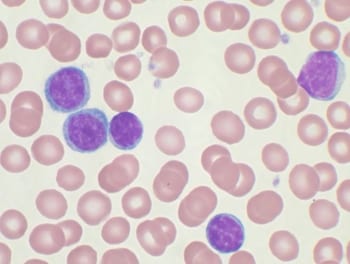
Researchers have added chronic lymphocytic leukemia (CLL), the most common type of leukemia in western countries, to the long list of diseases that have been associated with common genetic variants.
CLL is caused by abnormal, uncontrolled growth of immune cells called B-cells. Usually, there are no obvious symptoms and the disease is detected only during a routine blood test. In the United States, about 15,000 new cases of the disease are diagnosed each year.
Because there is a familial basis to the disease, a role for genetics in CLL has long been suspected. First-degree relatives of patients have a seven-fold increased risk for the disease. But so far, no clear contenders for the “CLL gene” have been found. This suggested to researchers that instead of there being one or two genes with large effects to be found, there might instead be multiple genetic risk factors for CLL, each contributing a small amount to the risk.
By studying about 1,500 British people with CLL and about 3,000 controls, Di Bernardo et al found six distinct SNPs associated with CLL. These results, published online today in Nature Genetics, not only begin to shed light on the genetics of the disease, but they also give researchers clues about its biological basis.
For about 54 percent of people of European ancestry who have three or fewer “risky” copies out of a possible 12 (two copies each for six SNPs), there is no significant difference in the risk of developing CLL. Having six risky copies ups a person’s odds about 3.8 times over those with none, and the 2.1 percent of that population who are unlucky enough to have seven risky copies have approximately eight-fold increased odds of developing CLL.
Although it’s far from certain that these six SNPs are actually causative factors for CLL, the authors note in their report that it will be intriguing to see if the SNPs are associated with CLL in non-Europeans. Both Asian and African populations have lower frequencies of the risky versions of each of the six SNPs — and lower rates of CLL.
Image: Mary Ann Thompson/GNU Free Documentation License



